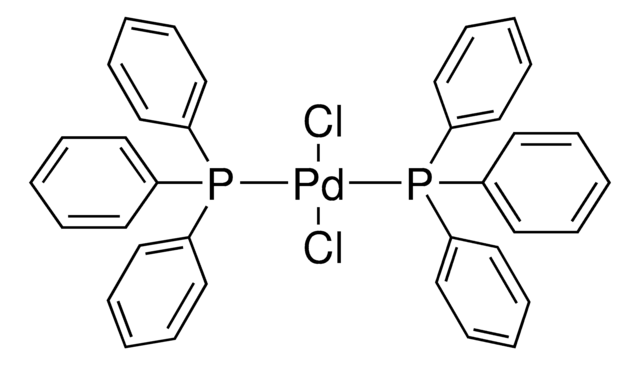Wichtige Dokumente
804215
[Ir{dFCF3ppy}2(bpy)]PF6
Synonym(e):
[Ir[dF(CF3)2ppy]2(bpy)]PF6
About This Item
Empfohlene Produkte
Form
powder
Qualitätsniveau
Eignung der Reaktion
core: iridium
reagent type: catalyst
reaction type: Photocatalysis
Photokatalysatoraktivierung
450 nm
SMILES String
FP(F)(F)(F)F.FC1=CC(F)=C(C2=[N]3C=C(C(F)(F)F)C=C2)C([Ir+]345([N]6=C(C7=CC=CC=[N]75)C=CC=C6)[N]8=C(C9=C(F)C=C(F)C=C94)C=CC(C(F)(F)F)=C8)=C1.[F-]
InChI
1S/2C12H5F5N.C10H8N2.F5P.FH.Ir/c2*13-8-2-3-9(10(14)5-8)11-4-1-7(6-18-11)12(15,16)17;1-3-7-11-9(5-1)10-6-2-4-8-12-10;1-6(2,3,4)5;;/h2*1-2,4-6H;1-8H;;1H;/q;;;;;+1/p-1
InChIKey
DZIQZTFRUCLPRL-UHFFFAOYSA-M
Anwendung
Product can be used with our line of photoreactors: Including Penn PhD (Z744035) & SynLED 2.0 (Z744080)
Ähnliches Produkt
Lagerklassenschlüssel
11 - Combustible Solids
WGK
WGK 3
Flammpunkt (°F)
Not applicable
Flammpunkt (°C)
Not applicable
Hier finden Sie alle aktuellen Versionen:
Analysenzertifikate (COA)
Die passende Version wird nicht angezeigt?
Wenn Sie eine bestimmte Version benötigen, können Sie anhand der Lot- oder Chargennummer nach einem spezifischen Zertifikat suchen.
Besitzen Sie dieses Produkt bereits?
In der Dokumentenbibliothek finden Sie die Dokumentation zu den Produkten, die Sie kürzlich erworben haben.
Kunden haben sich ebenfalls angesehen
Artikel
Csp2- and Csp-hybridized coupling reactions are established catalytic approaches. However, multi-step Csp3- and Csp2-coupling reactions of boronic acids and related derivatives are still limited by ineffective two-electron transmetalation reactions.
Unser Team von Wissenschaftlern verfügt über Erfahrung in allen Forschungsbereichen einschließlich Life Science, Materialwissenschaften, chemischer Synthese, Chromatographie, Analytik und vielen mehr..
Setzen Sie sich mit dem technischen Dienst in Verbindung.
![Tris[2-phenylpyridinato-C2,N]iridium(III) sublimed grade](/deepweb/assets/sigmaaldrich/product/structures/167/234/658d0b76-d31d-4fd5-8041-e04e207227c9/640/658d0b76-d31d-4fd5-8041-e04e207227c9.png)